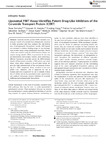Liposomal FRET Assay Identifies Potent Drug‐Like Inhibitors of the Ceramide Transport Protein (CERT)
Samaha, Doaa
Hamdo, Housam H.
Cong, Xiaojing
Schumacher, Fabian
Banhart, Sebastian
Aglar, Öznur
Möller, Heiko M.
Heuer, Dagmar
Kleuser, Burkhard
Saied, Essa M.
Arenz, Christoph
Ceramide transfer protein (CERT) mediates non‐vesicular transfer of ceramide from endoplasmic reticulum to Golgi apparatus and thus catalyzes the rate‐limiting step of sphingomyelin biosynthesis. Usually, CERT ligands are evaluated in tedious binding assays or non‐homogenous transfer assays using radiolabeled ceramides. Herein, a facile and sensitive assay for CERT, based on Förster resonance energy transfer (FRET), is presented. To this end, we mixed donor and acceptor vesicles, each containing a different fluorescent ceramide species. By CERT‐mediated transfer of fluorescent ceramide, a FRET system was established, which allows readout in 96‐well plate format, despite the high hydrophobicity of the components. Screening of a 2 000 compound library resulted in two new potent CERT inhibitors. One is approved for use in humans and one is approved for use in animals. Evaluation of cellular activity by quantitative mass spectrometry and confocal microscopy showed inhibition of ceramide trafficking and sphingomyelin biosynthesis.
Dateien zu dieser Publikation

